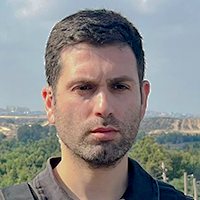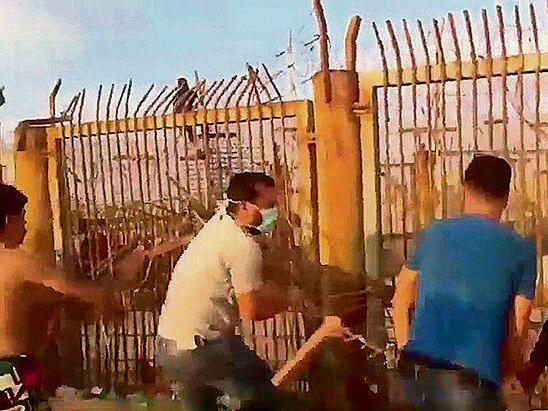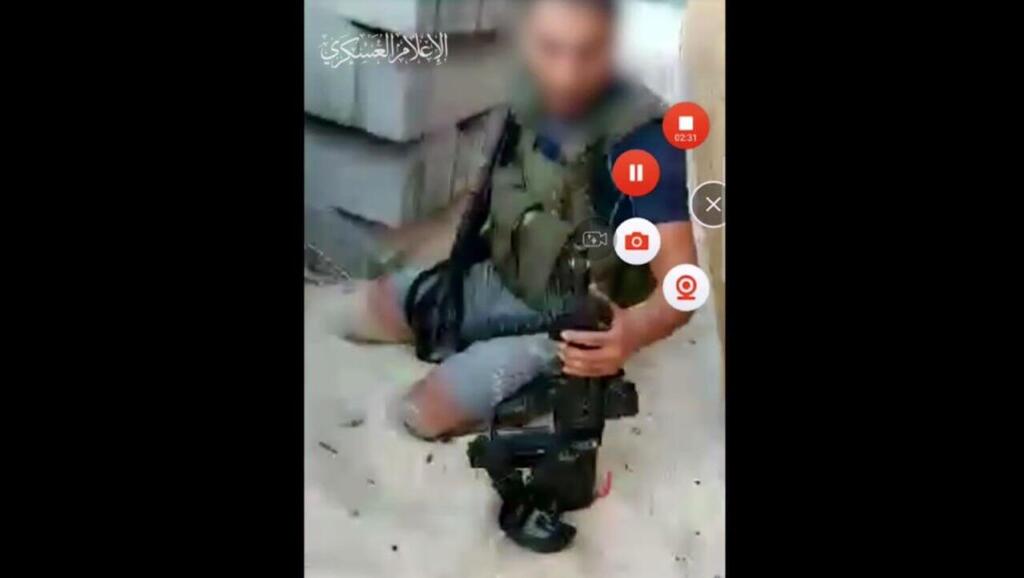A critical decision by a company commander at the Israel Defense Forces’ Zikim training base prevented a mass killing of recruits during the Hamas assault on southern Israel on Oct. 7, according to an IDF investigation released Sunday.
The report detailed how about 100 recruits were hidden in fortified shelters and command staff fought off two waves of invading Hamas terrorists. Five commanders, one soldier, and one civilian were killed in the battle at the Home Front Command’s training base near Kibbutz Zikim.
According to the investigation, commanders rushed forward to confront the attackers, suffering heavy casualties early in the battle. Five commanders were killed during exchanges of fire that subsided by 9:30 a.m.
"If they had been equipped with more lethal weapons, such as grenades and machine guns, they would have been better positioned against the attackers," the investigation stated. It also cited a lack of explanation for why soldiers from the Golani Brigade retreated from an encounter with Hamas’ Nukhba terrorists along the nearby coastline.
The report reconstructed the events at the base. At 7:24 a.m., soldiers first spotted terrorists approaching. Following an initial exchange of fire at 7:29 a.m., injuries were reported at a rear guard post. By that time, the 18-year-old recruits had already been moved into fortified shelters, following standing orders to leave guard posts and seek shelter during rocket sirens.
Throughout the morning, rookie commanders led the defense of the base, shielding the young recruits, who had joined the army only two months earlier. Squad commanders and officers quickly replaced the recruits at guard positions in a decision by the company commander that likely prevented a mass casualty event. Among the seven killed, five were commanders who fell around an hour after the assault began, during a battle at the shooting range gate. A soldier and a civilian woman, who had fled from a nearby beach party to the base seeking refuge, were also killed.
By 9:30 a.m., the fighting at the base had diminished. Reinforcements arrived only around 1:30 p.m., hours after the final attackers had been neutralized.
The attack on the Zikim area was part of a massive assault across southern Israel that morning. The region faced 27 infiltration routes, 24 combat sites, approximately 2,500 terrorists, 17 enemy drones, and an estimated 1,700 rockets and mortars.
The report highlighted several acts of heroism. One commander continued fighting for over an hour after being shot in the leg. Other officers gathered civilians from the beach into shelters, one of whom was killed later during the battle. Another soldier fought terrorists with helmets and his bare hands after running out of ammunition. Medics treated wounded under fire without waiting for evacuation.
Investigators largely relied on soldiers’ testimonies because security cameras at the base were disabled by 6:29 a.m. Nukhba terrorists had also entered without body cameras. In several cases, armed recruits defending shelter entrances killed approaching terrorists, sustaining injuries themselves.
One recruit, guarding a shelter packed with about 100 others, shot and killed a terrorist who approached, unaware of the number of people inside. "Had the terrorist entered, the consequences could have been catastrophic," the report said.
The investigation noted that terrorists attempted to seize weapons from the base’s armory but failed.
The report also cited a troubling incident in which seven Golani soldiers, stationed at a nearby beach, spotted Nukhba terrorists landing from the sea but fled instead of engaging. The terrorists later used the soldiers’ military van to speed toward Kibbutz Zikim. A kibbutz security officer, warned by an observation post, organized a defense and eliminated the attackers. "The Golani soldiers were in a difficult mental state," the investigation stated.
The IDF criticized its own policy at the time that allowed commanders to take home leave without their personal weapons. "Every soldier must be attached to his weapon from the moment he receives it until discharge," the report said.
Despite the challenges, the investigation credited the defense of the base to the commanders’ quick decisions, naval support, and the efforts of a nearby territorial company, all of which helped prevent the mass kidnapping of soldiers.
Get the Ynetnews app on your smartphone: Google Play: https://bit.ly/4eJ37pE | Apple App Store: https://bit.ly/3ZL7iNv
The report also criticized the base’s low level of operational readiness, despite its proximity to Gaza and years of rocket fire. "There was no effective firepower at the base despite its location in an operational zone. If there had been machine guns, grenades, or anti-tank weapons, the outcome would have been even better," it said.
Since the Oct. 7 attack, the Home Front Command’s training base has been relocated further south to a rear-area facility, though recruits continue to use Zikim’s training grounds.




